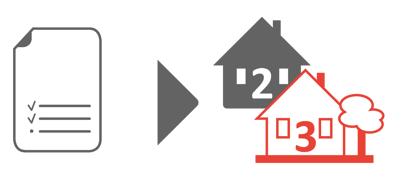Project Management? Yes, we can.
PRINCE2, PMI, Scrum, XP, LeSS, etc. - the list of project management theories is long.
With the NextLytics "project management hybrid", we pursue the goal of creating a practicable mix of both agile and plan-based project methodologies from the huge amount on offer. In this way, we manage to bring each project to a successful conclusion with individual commitment.
Four steps, one final retrospective
Agile start
1
Kick-Off & Prototype
Iterative Process
Plan-based implementation
2
Technical
realisation
MVP implementation
&
Definition of test cases
3
Test phase
Application of
test cases
&
Debugging
4
Go live &
Hypercare
Technical support
Agile closure
Retro
Joint reflection and feedback session on the project work
Agile start
Kick-off & Prototype
Especially at the beginning of the project in the "kick-off and prototype phase", we follow an agile approach. With the aim of developing a common idea of project goals, process and content together with our customers, the flexibility of this approach helps us to iteratively (gradually approaching) define a planning basis.
The kick-off & prototype phase follows the "think it, build it, ship it, tweak it" approach and defines the MVP (Minimum Viable Product - a first usable product version with the minimum functionalities to be able to further develop it based on feedback).
Iteration process





Summary Kick-Off & Prototype:
- „Build it“ = Implementation of the requirements or the requests for enhancements / optimisations after the first run
- „Ship it“ = Presentation of the MVP or, in the case of repeated runs, presentation of the updates with enhancements and optimisations
- „Tweak it“ = new inclusion of enhancements and optimisation requests
This process is repeated (iterations) until the product is defined in such a way that it can go into plan-based implementation.
Plan-based implementation
2
Technical realisation
MVP implementation
&
Definition of test cases
3
Testphase
Application of test cases
&
Troubleshooting / Debugging
4
Go live & Hypercare
Live connection/
application by customer
&
Technical support
(10 % T&M order volume)
The agile start phase for defining the project details and optimising the MVP is followed in three steps by a plan-based - classic waterfall-oriented - implementation of the project.
Here we agree on a comprehensible schedule together with the client so that all parties are aware of when, what and by whom which tasks are to be completed and interim results can be expected.
This procedure applies to the actual implementation (technical realisation), the test phase and the go-live with the associated hypercare.
Agile closure
Project conclusion - Retrospective (Retro)
The conclusion, after the successful go-live and project integration into the customer organisation, is a final "retro workshop", which once again follows an agile project methodology. In the retrospective, we ask each other questions together with the client that relate both to the past project development:
- What went well?
- What could we do differently in future projects?
As well as on current and future issues:
- What is still unclear?
- What does the future follow-up look like in case of queries?
Retro
Joint reflection and feedback session on the project work
No project is like the other

Let's talk about your project!
Find interesting articles about this topic in our Blog

Why SAP BI Projects Fail (Part 2/2)
In an earlier article, you learned what problems lurk in classical SAP BI project management. In...

Why SAP BI Projects fail (Part1/2)
I guess we've all seen a horror project before. One where pretty much everything went wrong: the...

























